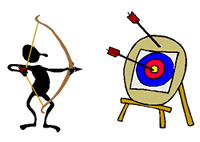The buying decision
Virtually any activity in the value chain can affect a customer's willingness to pay for a product. Product design, quality, performance, features, aesthetics, etc. all affect their decision. They make a judgement about your value proposition - how it effects them.
 A challenge is narrowing the long list of customer "wants" down to those key to their buying decision. (I use "wants" rather than "needs" because "wants" focus on the future ... that may be too subtle.) A challenge is narrowing the long list of customer "wants" down to those key to their buying decision. (I use "wants" rather than "needs" because "wants" focus on the future ... that may be too subtle.)
Most firms have a few to around 10 clusters of customers, each with a different sense of importance about the key "wants" your product and service satisfy.
Market segments
This clustering of customers is my definition of a market segment, and how you approach or position your product for each cluster are key strategic decisions.
Before I describe the method, there are the limits to analyzing the buying decision. It is more difficult when customer tastes are evolving rapidly or when the benefits that a customer sees in the product are hard to quantify. Sometimes, you have to make your best judgment.
The method are first to quantify how important are their "wants" and second, to measure how well you perform over time and compared to your competitors. Are you on target?
The data are displayed in an Importance/Performance Matrix.
 The product-customer match The product-customer match |
|
Importance - Performance Matrix  |
|